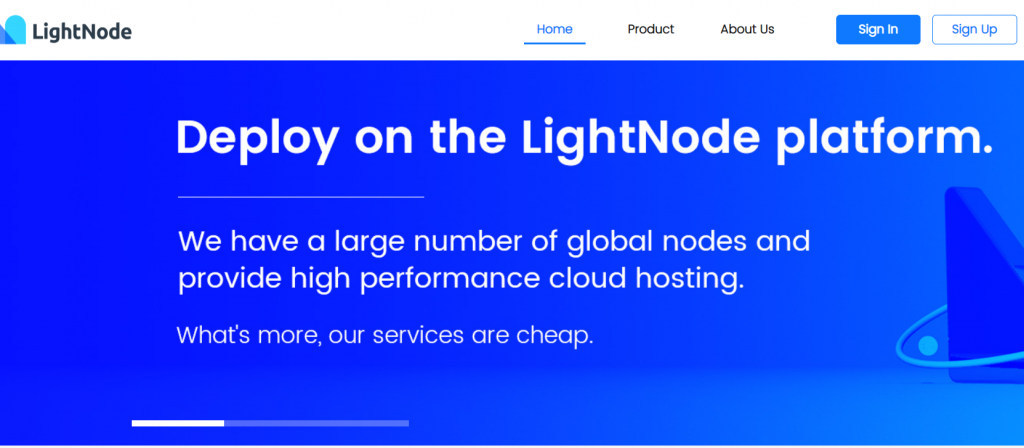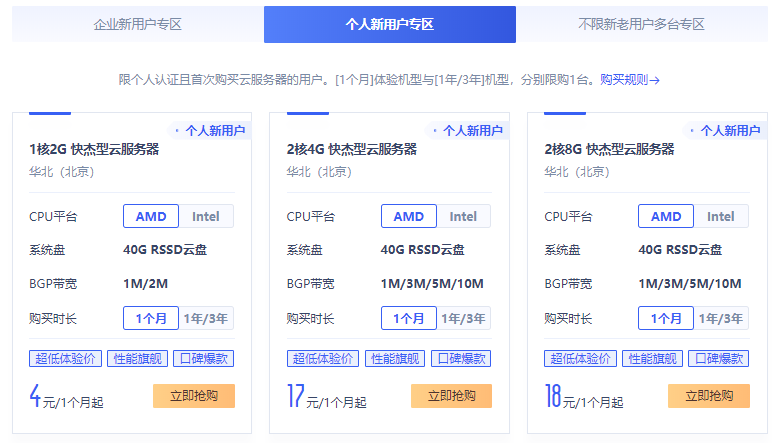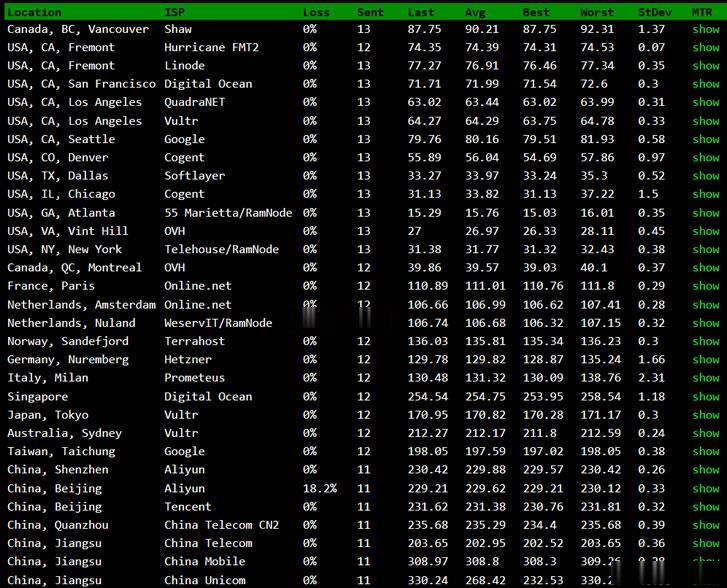标记基于Java的搜索引擎英文翻译
职场大变样社区www. z cdby. com下载毕业设计成品全套资料全部50元以下
学校代码 学 号
二○○八年六月
内蒙古工业大学本科毕业设计外文文献翻译
Dynamic Web-based data access using JSP and JDBCtechnologie s
This article discusses using the JSP and JDBC technologies to integrate static,dynamic,and database content in Web sites.For the purposes of simplicity and illustration,the JSP pages here use short scriptlets to expose the JSP developer to the underlying JDBCconcepts instead of hiding them in custom tags. The author introduces a key designapproach that integrates JavaBeans components with JDBC, similar to the way thatJavaServer Pages technology already uses beans with HTTP.He also provides code forimp lementing this integration.
Building on the Java Servlet technologcore server-side Java architecture for generating dynamic content.One source of dynamiccontent is the relational database. To manage everything from online communities toe-commerce transactions,Web sites use relational databases to store all sorts ofinformation: catalog items, images, text,data about registered members, and so on.Thisarticle discusses the application of JSP technology to relational databases through JavaDatabase Connectivity(JDBC). JDBC is the means by which Java programs work withrelational databases.
To get the most out of this article,you should be familiar with JDBC and SQL.
JDBC basics
JDBC is the bridge between Java code and SQL databases.The primary JDBC objectsrepresent connections to a database and the statements performed using those connections.The two basic kinds of statements used with a relational database are queries and updates.As a prerequisite to each,you first need to establish a connection to the database,which isdone with the j ava.sql.DriverManager class.Connections take a long time(in computertime) to establish, so in a transaction-intensive environment like a Web server,you want toreuse connections whenever possible.Such reuse is called connection pooling.
In real life, JDBC code is not this simple; exceptions and warning conditions need tobe handled. Listing 2 illustrates the same JDBC example but adds handling for JDBCexceptions and warnings. In this example, exceptions and warnings are simply logged and,in the case of exceptions,we abort the operation.However, the f inally{ } clauses ensurethat resource cleanup proceeds.
1
内蒙古工业大学本科毕业设计外文文献翻译
The actual processing of the results is only hinted at here;we'll be looking at it moreclosely later on in this article. If we were performing a database update instead of a query,we would replace the whi le loop with the following:int count = statement.executeUpdate(sqlUpdate) ;
The executeUpdate( )method returns the number of rows affected by the updatestate me nt.
If the material in these code listings seems unfamiliar,you may want to spend sometime reviewing some of the JDBC tutorial information found in the Resources section.
Using JDBC with JSP pages
So how do we combine JDBC and JSP technologies so that our dynamic contentcomes from a database?
As a general rule, good JSP practice suggests that you separate presentation frommodel behavior. This is analogous to the Model-View-Controller (MVC) paradigm inobject-oriented programming.One reason for the separation is that applications based onJSP technology are likely to have the Model and Controller components authored byprogrammers,whereas the View components will be authored by page designers. In thecase of JSP application architectures, the role of View,whose responsibility is presentation,is handled by a JSP page. The role of Controller,whose responsibility is reacting torequests, is often played by a servlet,but many JSP practitioners are coming to realize theadvantages of using a JSP page in the Controller role. The role of Model,whoseresponsibility is modeling the behavior of application entities, is typically played byJavaBeans components.
In addition to deciding where in the MVC paradigm to interact with the database,youhave several choices for integrating JDBC technology into your JSP pages.For example,you can insert JDBC using scriptlets, insert it using a tag library,or hide it within customtags or other classes.We'll next look at examples of several approaches and discuss theiruse.
A tag l ibrary example using DBTags
One of the first things that a new JSP programmer hears, usually fromwell-intentioned friends and experts, is not to use scriptlets. Instead, they tell the new JSPprogrammer to use custom tags.Custom tags are a means by which the JSP platform's
2
内蒙古工业大学本科毕业设计外文文献翻译
capabilities are extended: custom XML-style tags, tied to code libraries, implement thedesired functionality.We'll see how well they work, in our next example.
The Jakarta TagLibs Project is a subproject of the Jakarta Project, the officialreference implementation of the Java Servlet and JavaServer Pages technologies.
One of the packages developed under the auspices of the Jakarta TagLibs Project isthe DBTags custom tag library(formerly known as the JDBC tag library).The JSP page inListing 4 implements the same hit counter as in Listing 3, replacing the scriptlet withcus to m ta gs.
Most tag libraries written to date have been written by programmers for programmers;the semantics of those tags are geared toward other programmers.Furthermore, rememberthe separation of model and presentation?That isn't well supported by DBTags. Thesql:getColumn tag is analogous to the j sp:getProperty action: it emits the tag's resultdirectly into the output stream.That makes it difficult to separate using DBTags fromrendering output into the desired form.Finally,notice that the logic differs between Listing3 and Listing 4.The DBTags execute tag consumes the update count from any updatestatement sent via JDBC;only query results can be retrieved.That means we cannot findout how many rows were updated by the update statement. So we have to switch theupdate and insert statements;we always try to insert a new record, force DBTags toignore any error,and then perform the update.
In fairness to the DBTags tag library, it is not a bad tag library for programmers.Aside from its consumption of the update count, the code provides a fairly good mappingto JDBC.Therein lies the problem, however: the tags provide little more than a directtranslation of the JDBC package.Other than hiding some exception handling, the taglibrary doesn't really provide any abstraction over scriptlets. It certainly doesn't helpseparate p resentatio n fro m functio n.
So, the real issue is not whether to use scriptlets or tags; that question is aconsequence,not a cause, of the problem of separating function from presentation.Thesolution is to provide higher-level functionality to presentation-page authors at anappropriate level of discourse.The reason tags are considered better than scriptlets is thatscriptlets,by definition,are programming,whereas tags can represent high-level concepts.
Hiding JDBC from presentation pages
3
内蒙古工业大学本科毕业设计外文文献翻译
When integrating JDBC with JSP technology,we want to hide as much of thatintegration from the presentation author as possible.Where we do expose databaseconcepts,we want to expose them at a suitable level of abstraction.This approach leads toour next example.
In the example in Listing 5,we hide the JDBC integration from the presentation page.(A live version of this page is located on the JavaServer Pages Developers Guide Web site.)
Integrating with JavaBeans components
The examples so far have been fairly simple,but most database operations are goingto be more sophisticated than these simple queries and updates.So now that we've coveredsome basic principles of using JDBC with JSP pages, let's conclude with a slightly morecomplex,and certainly more common, type of application.
The example for this section will show one way to support visitor-supplied content ona Web site. In other words,we want to allow visitors to read database content associatedwith a URI and to contribute additional content.Such content is fairly common on modernWeb sites.The same basic parts can be used to construct:
Reviewpages, suchas those found on Amazon.com
Links pages
Bulletin boards
W ik iweb s
An only slightly more elaborate version of the JSP components in this example canimplement Web pages that seem very different,authored by designers of varying technicalbackgrounds.All that the pages would appear to have in common is a provision forvis itor-contributed content.
Our annotation example uses an HTML form.When using HTML forms with JSP, itis convenient to use a bean whose properties map to the form fields.
Integration with JavaBeans components is one of the better-designed aspects of JSPtechnology.Unfortunately, the integration between beans and JDBC is not seamless at all,so for our JDBC work at DevTech,we developed a package that provides not onlyintegration between beans and JDBC but also the necessary exception handling, relievingthe programmer from having to deal with the details.
The annotation example uses two of the query and update methods from the
4
内蒙古工业大学本科毕业设计外文文献翻译
com.devtech.sql package.The particular query method used passes a bean class,an SQLquery, and an Obj ect array to fill in the placeholders in the query. In this case, the onlyplaceholder is for the page's URL. The result is a database cursor object,which isessentially a type of iterator.
Integration with JavaBeans components is one of the better-designed aspects of JSPtechnology.Unfortunately, the integration between beans and JDBC is not seamless at all,so for our JDBC work at DevTech,we developed a package that provides not onlyintegration between beans and JDBC but also the necessary exception handling, relievingthe programmer from having to deal with the details.
The annotation example uses two of the query and update methods from thecom.devtech.sql package.The particular query method used passes a bean class,an SQLquery, and an Obj ect array to fill in the placeholders in the query. In this case, the onlyplaceholder is for the page's URL. The result is a database cursor object,which isessentially a type of iterator.
We've used scriptlets in this example only to show you, a programmer,what ishappening. If they were replaced with declarative tags, they would be clear to the pagedes igner,but uninformative to you.
The logic is straightforward. The annotation.getCursor( ) call acquires aconnection to the server, issues the query, and sets up a database cursor object,annotations, on the result set.Each time annotations.next( ) is called, a new row isfetched from the result set,and its values moved into a bean whose reference is returnedfrom the method. The particular next( )method being used takes a bean parameter topopulate.Although we could have the cursor instantiate a new bean for each row, reusingthe bean is more efficient.
Notice that neither the actual query,nor the update, is present in the presentation page.The included page,which sets up the environment for the presentation page,also includesthe setProperty and update actions.Those actions are independent of the presentationpage;only the contract embodied by the annotation bean's properties is significant.Thisis in keeping with a policy to separate presentation from model behavior. The pagedesigner is fully able to change how the presentation is rendered but has no access to howthe database is integrated. If a change is to be effected in updating or querying the database,
5
内蒙古工业大学本科毕业设计外文文献翻译
it is delegated to a JSP programmer.
Summary
This concludes an introduction to combining the JavaServer Pages, JavaBeans, andJDBC technologies to generate dynamic content through relational databases.We startedwith the most obvious approach for the new JSP programmer: scriptlets.We saw how theuncontrolled use of scriptlets intertwines logic and presentation,making both of them hardto maintain.We also saw that tag libraries don't necessarily improve MVC separation,andthat the pages using them may not be understandable to page designers if the tags areexpressed in programming terms. Finally,we looked at more complex examples thatillustrate a few ways to separate database access from the presentation of content.
You should now have some basic ideas about how to integrate database content into aWeb site while hiding the actual database access from page designers.Note, too, that theleast informative examples for you,a programmer,are the ones most appropriate for a pagedesigner.When you plan your JSP solutions,keep your page designers in mi
6
内蒙古工业大学本科毕业设计外文文献翻译
使用J SP和JDB C技术访问基于Web的动态数据
本文讨论使用JSP和JD BC技术把静态的、动态的及数据库内容集成在Web站点中。为了简洁明了的说明问题文中的JSP页面使用短的scriptlet让JSP开发者接触到底层的JDBC概念而不是把其隐藏在定制标记中。作者介绍一种集成JavaBeans组件和JDBC的主要设计方法该方法同一直以来JavaServer Pages技术采用的、把bean用于HTTP的方式类似。他还提供实现该集成的代码。请在讨论论坛同作者及其它读者分享对本文的理解。
JavaServer Page JSP技术建立在Java Servlet技术的基础之上是核心的生成动态内容的服务器端Java体系结构。关系数据库是动态内容的来源之一。Web站点使用关系数据库存储各类信息 目录项、 图像、文本、关于注册成员的资料等等从而管理从在线社区到电子商务交易的一切事务。本文讨论通过Java数据库连接
JD BC把JS P技术应用于关系数据库。正是JDBC使Java程序可以使用关系数据库。
要深入理解本文您应该熟悉JDBC和SQL。
JD B C基础知识
JDBC是Java代码和S Q L数据库之间的一座桥梁。主要的JDBC对象表示同数据库的连接及利用这些连接执行的语句。用于关系数据库的两种基本语句是查询和更新。两者都需要的一个前提条件就是您首先要利用java.sql.DriverM anager类同数据库建立连接。建立连接要花很长时间就计算机时间而言 因此在Web服务器这种事务繁忙的环境中您希望尽可能重用连接。这样的重用叫做建立连接池。
在现实生活中 JD B C代码不会如此简单 因为需要处理异常和警告情况。 清单2说明的是同一个JDBC示例但添加了对JDBC异常和警告的处理。在这个示例中异常和警告只记入日志并且对于异常情况我们将异常终止操作。不过finally{}子句将确保资源清除过程进行。
对真实的结果处理过程在此仅作一下提示我们将在本文后面的部分接着更仔细的分析这个问题。如果我们正在执行的不是数据库查询而是更新那我们可以把while循环替换成如下语句int c o unt=sta te me nt.e xe c uteUp da te(s q lUp date);exec uteUp d ate()方法返回up date语句所作用的行的总数。
如果这些代码清单中的材料显得陌生您也许希望花些时间重温一下在参考资
7
内蒙古工业大学本科毕业设计外文文献翻译
料部分中找到的一些JD B C教程信息。
JDBC用于JSP页面
那么我们怎样结合使用JDBC和JSP技术才能使我们的动态内容来自数据库呢
作为一条普遍的法则 良好的JSP惯例建议您应当把表示同模式行为分离。这与面向对象编程中的“模式-视图-控制器MVC ”范例类似。分离原因之一是基于JSP技术的应用很可能由程序员编写“模式Mode l ”和“控制器Contro ller ”组件而由页面设计人员编写“视图(View)”组件。就JSP应用体系结构而言负责表示的“视图”角色由JSP页面处理。负责对请求做出响应的“控制器”的角色通常由 servlet担当但许多JSP用户开始认识到用JSP页面来担任“控制器”的角色的优点。 “模式”这一角色负责为应用实体的行为构建模式典型情况下由JavaBean组件来担当。
除确定在MVC范例中的何处同数据库交互之外关于在JS P页面中集成JDBC技术您有多种选择。例如您可以使用scrip tlet插入JDBC或使用标记库插入还可以把它隐藏在定制标记或其它的类里。接下来我们要看看一些方式的示例并讨论其用法。
使用DBTag的标记库示例
通常善意的朋友和专家会告诉JSP程序员新手一些基本知识其中之一就是不要使用scriptlet。相反他们会让JSP程序员新手使用定制标记。我们利用定制标记扩展JSP平台的功能 同代码库相连的定制XML样式标记实现预期功能。我们将会在下个示例中看到DB Ta g的工作情况。
Jakarta TagLib s Proje ct是Jakarta P rojec t 请参阅参考资料的一个子工程该工程是Java Servlet和JavaServer Pages技术的官方参考实现。
在Jakarta TagLibs Project的支持下开发的一个包是DBTag定制标记库以前叫做JDBC标记库 。清单4里的JSP页面把scriptlet替换成定制标记实现的点击计数器和清单3中的一模一样。
关于标记库Alla ire没有告诉您的是 标记设计是一种语言设计。迄今为止所写的大多数标记库是由程序员为程序员写的这些标记的语义适合于其它的程序员。不仅如此还记得模式和表示的分离吗 DB Ta g对这一点不太支持。sql:getCo lumn标记同j sp:getP roperty动作类似它把标记的结果直接发给输出流。这给DB Ta g的利用与把输出转化成要求的格式之间的分离带来了困难。最后请注意清单3和清单4的逻辑差异。DB Ta g的e xec ute标记使用所有来自通过JDBC
8
- 标记基于Java的搜索引擎英文翻译相关文档
- 查询英文搜索引擎
- 检索英文搜索引擎
- 搜索引擎英文搜索引擎
- 搜索关键词搜索引擎常用技巧——英文资料篇
- 关键词英文seo搜索引擎优化的核心
- 外文基于Java的搜索引擎之面向主题英文翻译
LightNode($7.71/月)香港cn2精品线路
LightNode官网LightNode是一家位于香港的VPS服务商.提供基于KVM虚拟化技术的VPS.在提供全球常见节点的同时,还具备东南亚地区、中国香港等边缘节点.满足开发者建站,游戏应用,外贸电商等应用场景的需求。为用户带来高性能服务器以及优质的服务的同时还提供丰厚的促销活动,新用户注册最高送$20。注册用户带新客即可得10%返佣。商家支持PayPal,支付宝等支付方式。官网:https:/...

UCloud新人优惠中国香港/日本/美国云服务器低至4元
UCloud优刻得商家这几年应该已经被我们不少的个人站长用户认知,且确实在当下阿里云、腾讯云服务商不断的只促销服务于新用户活动,给我们很多老用户折扣的空间不多。于是,我们可以通过拓展选择其他同类服务商享受新人的福利,这里其中之一就选择UCloud商家。UCloud服务商2020年创业板上市的,实际上很早就有认识到,那时候价格高的离谱,谁让他们只服务有钱的企业用户呢。这里希望融入到我们大众消费者,你...

BuyVM新设立的迈阿密机房速度怎么样?简单的测评速度性能
BuyVM商家算是一家比较老牌的海外主机商,公司设立在加拿大,曾经是低价便宜VPS主机的代表,目前为止有提供纽约、拉斯维加斯、卢森堡机房,以及新增加的美国迈阿密机房。如果我们有需要选择BuyVM商家的机器需要注意的是注册信息的时候一定要规范,否则很容易出现欺诈订单,甚至你开通后都有可能被禁止账户,也是这个原因,曾经被很多人吐槽的。这里我们简单的对于BuyVM商家新增加的迈阿密机房进行简单的测评。如...
